Chesapeake Community Modeling Program
CCMP Newsletter | August 2011
Volume 4, Issue 3
Introduction
Welcome to the summer 2011 edition of the CCMP Newsletter. CCMP recently wrapped up a very successful hydrodynamic modeling workshop (more below) and has begun planning Chesapeake Modeling Symposium 2012. We hope you enjoy this edition and, as always, please contact Dave Jasinski if you have any questions or comments.

Contents
1. CCMP News in brief
2. Open Source on the March
3. Featured Modeler: Ming Li
4. Featured Model: ROMS
5. Upcoming Meetings
1. CCMP News in Brief
CCMP provides input to CBP on NAS report
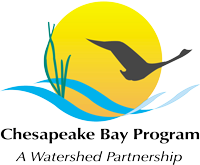 In July, the CCMP, in coordination with STAC, provided input to the Chesapeake Bay Program relative to some of the modeling recommendations that were made in the National Academy of Sciences (NAS) report titled, “Achieving Nutrient and Sediment Reduction Goals in the Chesapeake Bay: An Evaluation of Program Strategies and Implementation.” This input was based on discussion at the June Hydrodynamic Modeling Workshop (see below) that was hosted by CCMP and partially funded by STAC. Many of the workshop recommendations were similar to those in the NAS report.
In July, the CCMP, in coordination with STAC, provided input to the Chesapeake Bay Program relative to some of the modeling recommendations that were made in the National Academy of Sciences (NAS) report titled, “Achieving Nutrient and Sediment Reduction Goals in the Chesapeake Bay: An Evaluation of Program Strategies and Implementation.” This input was based on discussion at the June Hydrodynamic Modeling Workshop (see below) that was hosted by CCMP and partially funded by STAC. Many of the workshop recommendations were similar to those in the NAS report.
In the STAC letter to the CBP, the following recommendations were made:
- Use multiple models – This will provide more insight to system behavior and confidence in model output than a single model. Additionally, an estimate of uncertainty can be derived from multiple model outputs.
- Use open source community models - Such models are more likely to adopt advantageous new computational approaches, potential model errors are more likely to be identified, and the general confidence in such models tends to be higher.
- Assess model skill - All present and future CBP models should be openly and quantitatively assessed by the scientific community.
- Implement models in a modular fashion - Modularized components could be easily interchanged within a community-supported testbed by modelers both inside and outside the CBP. In this fashion, various ensembles of watershed, hydrodynamic, water quality, and other models could be more easily compared and tested.
- Form a Chesapeake Modeling Laboratory to enable the above - The Chesapeake Modeling Laboratory (CML) suggested in the NAS report is a logical mechanism for carrying out the above recommendations. It would be possible to build off the existing community modeling infrastructure that is already focused on the Bay region in order to, at a minimum, form a permanently funded, virtual CML.
The CBP will respond to the NAS report on November 4, 2011.
CCMP Hydrodynamic Modeling Workshop
At the CBP Quarterly Model Meeting in the Summer of 2010, the Army Corp’s Carl Cerco (principal modeler for the CBP tidal modeling effort) suggested that the hydrodynamic model CH3D may have reached its zenith for use in the Program and that future needs for shallow water resolution and living resources of the bay might be better addressed with other hydrodynamic models. He encouraged consideration of the Corp’s Adaptive Hydraulics (ADH) model as a replacement. Given that there are several other hydrodynamic models that might provide the skill needed, CCMP decided to convene a workshop to review alternatives and provide feedback to the CBP.
The Workshop was held June 9 and 10 at the Smithsonian Environmental Research Center in Edgewater, MD and was jointly funded by STAC, SURA, and CSDMS. About 40 individuals from institutions within and outside the Chesapeake Watershed participated and discussion focused on the suite of hydrodynamic models as well as issues related to hydrodynamic modeling.
The models presented and discussed at the workshop were:
- CH3D
- FVCOM
- EFDC
- sECOM
- ADH
- ROMS
Recommendations derived from a panel discussion at the end of the workshop were developed into an advisory letter (see above) to the CBP relative to the National Academy of Sciences (NAS) report titled, “Achieving Nutrient and Sediment Reduction Goals in the Chesapeake Bay: An Evaluation of Program Strategies and Implementation.” A workshop summary report will also be written and submitted to STAC in September.
CheMS12
Planning has begun for Chesapeake Modeling Symposium 2012! CCMP has assembled a planning committee and convened meetings to develop the symposium structure and content. The theme for the symposium will be "Interfacing between modeling, management, and the public: TMDLs, politics, litigation, and conflicting stakeholder interests". The symposium is scheduled for May 21-22 at the Annapolis Doubletree Hotel. Keep an eye out for a call for special sessions in the very near future!!
2. Open Source on the March
Open Source Hardware and Design Alliance
 Most readers of this newsletter are familiar with the concept of open source software where the source code for the application is freely available and users are allowed to study, change, and improve it. The Open Source Hardware and Design Alliance (OHANDA) has recently been formed to encourage and support the same paradigm for hardware.
Most readers of this newsletter are familiar with the concept of open source software where the source code for the application is freely available and users are allowed to study, change, and improve it. The Open Source Hardware and Design Alliance (OHANDA) has recently been formed to encourage and support the same paradigm for hardware.
OHANDA was formed at the Grounding Open Source Hardware summit in July 2009. Their goal is to foster sustainable sharing of open hardware and design. Through OHANDA a hardware designer is granted a non-registered trademark in the form of a label with a unique identifier that can be affixed or engraved onto their hardware. In exchange, the designer agrees to grant what OHANDA refers to as the 4 freedoms to anyone:
- Freedom 0: The freedom to use the device for any purpose.
- Freedom 1: The freedom to study how the device works and change it to make it to do what you wish. Access to the complete design is a precondition to this.
- Freedom 2: Redistribute the device and/or design (remanufacture)
- Freedom 3: The freedom to improve the device and/or design, and release your improvements (and modified versions in general) to the public, so that the entire community benefits. Access to the complete design is a precondition to this.
Some of the products that have been registered with OHANDA include a multi-fuel stove for use in third world countries, a microcontroller circuit board, and a USB email encryption stick.
Google shutting Google Labs
 Google announced recently that it will be phasing out its Google Labs site, home of several experimental web applications. Many of these were stand-alone apps and several were add-ons to Gmail and Google Maps. While many of the applications in Google Labs will be discontinued, some will be graduated to full-fledged apps and some will be open sourced like the popular App Inventor for Android
Google announced recently that it will be phasing out its Google Labs site, home of several experimental web applications. Many of these were stand-alone apps and several were add-ons to Gmail and Google Maps. While many of the applications in Google Labs will be discontinued, some will be graduated to full-fledged apps and some will be open sourced like the popular App Inventor for Android
Google is shutting down the Labs because it is seeking to consolidate its efforts on fewer projects. If there is a Google Lab app that you like, check out what Googles plans are for it at http://www.googlelabs.com/.
Microsoft leaves Kinect code “open”
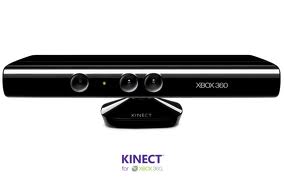 Microsoft has left the code open for its popular motion sensing interface for the Xbox video game consol. The device allows users to interact with games by moving their arms and legs. Programmers and engineers began hacking the Kinect as soon as it came on the market. They are using the Kinect to interface with computers and control robots among other things. Microsoft recently released a beta Software Developer Kit (SDK) to aid in application development. Why do this?
Microsoft has left the code open for its popular motion sensing interface for the Xbox video game consol. The device allows users to interact with games by moving their arms and legs. Programmers and engineers began hacking the Kinect as soon as it came on the market. They are using the Kinect to interface with computers and control robots among other things. Microsoft recently released a beta Software Developer Kit (SDK) to aid in application development. Why do this?
- They are reaping the benefits of allowing the developer community to do the creative work for them. These ideas can then be incorporated into proprietary games and other applications.
- There are plenty of developers and engineers who would like to incorporate motion control in their projects. For $150, Microsoft is supplying them with a device and the developers save huge amounts in time and dollars of having to come up with the technology themselves.
- Microsoft is not really taking too huge of aleap as it isn’t truly open because it can only be used for non-commercial applications.
3. Featured Modeler: Ming Li
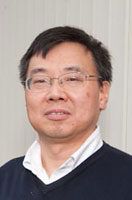 Horn Point Laboratory
Horn Point Laboratory
P.O. Box 775
Cambridge, MD 21613
Education:
- 1983, Hohai University, B. Eng.
- 1991, Oxford University, Ph.D., Geophysical Fluid Dynamics
Ming is a Professor at Horn Point Laboratory, University of Maryland Center for Environmental Science. His research focus is on estuarine and coastal dynamics, air-sea interaction, numerical ocean modeling, turbulent mixing processes, biological-physical interactions and marine pollution. Ming has been involved in both disciplinary projects focusing on fundamental physical processes that drive estuarine and coastal circulations as well as interdisciplinary projects that consider, among other things, the influence of both short-term and long-term changes in physical forcing processes on biogeochemical response in marine systems. Many of these studies have been associated with large experiments that have involved collaborations with field physical, biological and chemical oceanographers.
Mings’s current research projects include modeling studies of: (1) Estuarine response to climate forcing; (2) The regulation of phytoplankton dynamics in Mid-Atlantic estuaries subject to climatic perturbations; (3) The impact of secondary circulation and mixing on estuarine exchange flows; and (4) Hypoxia and ecological responses in Chesapeake Bay to climate variability and nutrient inputs. Ming has also been involved in modeling coastal inundation impacts in response to extreme weather events such as hurricanes. His research activities in the South China Sea have been instrumental in providing opportunities for graduate students from China to get training and research experience in the United States.
Although Ming’s research extends to many coastal and estuarine systems beyond Chesapeake Bay both in the US and internationally, he has also made important contributions to the local research community, for example, with the development of a community model for Chesapeake Bay based upon the Regional Ocean Modeling System (UMCES ROMS).
4. Featured Model: ROMS - Regional Ocean Modeling System
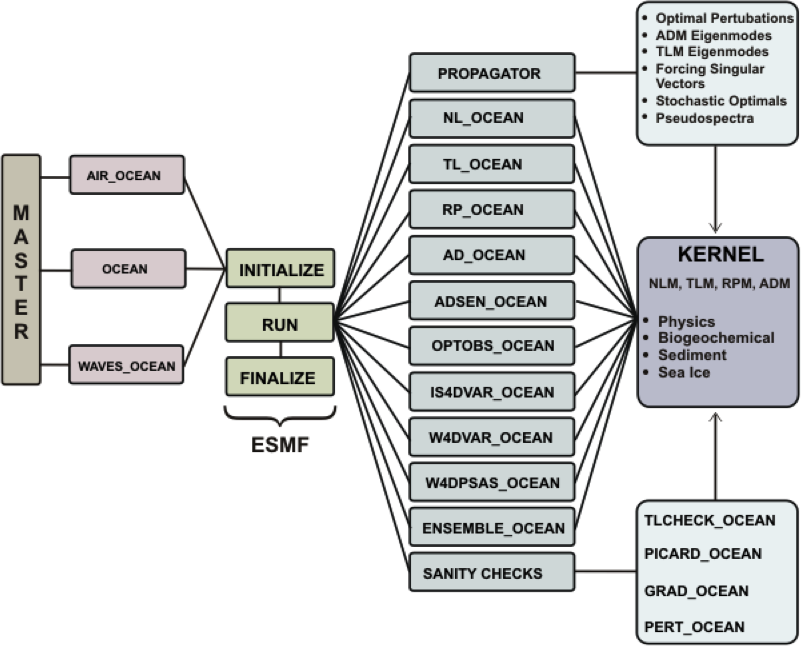 Our featured model for this edition is the Regional Ocean Modeling System (ROMS) that is being developed jointly by Rutgers and UCLA. It is an Open Source community model with a user community of over 2600 individuals located in more than 20 countries. To date, there are 238 scholarly articles on ROMS. Locally, it is the basis for both ChesROMS and CHIMP which have been previous CCMP featured models.
Our featured model for this edition is the Regional Ocean Modeling System (ROMS) that is being developed jointly by Rutgers and UCLA. It is an Open Source community model with a user community of over 2600 individuals located in more than 20 countries. To date, there are 238 scholarly articles on ROMS. Locally, it is the basis for both ChesROMS and CHIMP which have been previous CCMP featured models.
ROMS is a Free-surface, terrain-following, orthogonal curvilinear, primitive equations ocean model. Its dynamical kernel is comprised of four separate models including non-linear, tangent linear, representer tangent linear, and adjoint models. It has multiple model coupling (ESMF, MCT) and multiple grid nesting (composed, mosaics, refinement) capabilities. The code uses a coarse-grained parallelization with both shared-memory (OpenMP) and distributed-memory (MPI) paradigms co-existing and activated via C-preprocessing.
ROMS supports multiple coupled biogeochemical sub-models ranging from relatively simple NPZD-type formulations to complex multi-species and multi-element models. Coupled physical-biogeochemical ROMS implementations have been developed for a wide range of open-ocean, coastal and estuarine applications. The latter include the open source Chesapeake biogeochemical model ChesROMS (see http://ches.communitymodeling.org/models/ChesROMS/index.php and http://sourceforge.net/projects/chesroms/) and UMCES ROMS.
5. Upcoming Meetings
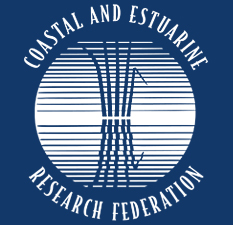 CERF 2011 - Societies, Estuaries and Coasts: Adapting to Change
CERF 2011 - Societies, Estuaries and Coasts: Adapting to Change
November 6-11, 2011, Daytona Beach, FL link
2012 NCSE Conference: Environment and Security
January 18-20, 2012, Washington, DC link
Ocean Integration in Earth System Prediction Capability Data Assimilation
September 27-29, 2011 link
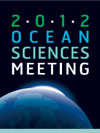 2012 Ocean Sciences Meeting
2012 Ocean Sciences Meeting
February 20-24, 2012 Salt Lake City, Utah link
Chesapeake Community Model Program
http://ches.communitymodeling.org/
Chesapeake Research Consortium
Edgewater, MD
410-798-1283